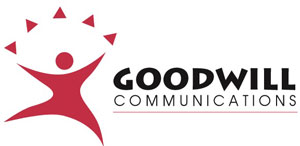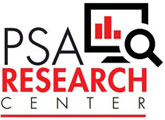

The world is making huge strides in overcoming global poverty. According to World Vision data since 1990, a quarter of the world has risen out of extreme poverty with less than ten percent of the world living in extreme poverty, which is defined as surviving on $1.90 a day or less.
Other World Vision data shows that when families move out of poverty, children’s health and well-being improve. Since 1990, the number of children dying — mostly from preventable causes such as poverty, hunger, and disease — is less than half of what it was, dropping from more than 35,000 a day to under 15,000.
While progress continues, countries affected by conflict, poor governance, and natural disasters, especially in sub-Saharan Africa, have seen an increase in people living in poverty.

World Vision is committed to ending poverty and helping every child experience the promise of life in all its fullness. “Though eradicating global poverty is hard, particularly in fragile contexts, we believe there is reason to hope,” observes Lauren Fisher, World Vision’s Public Relations Director.
Ending global poverty is a priority not only for World Vision. By 2030, as part of the United Nations’ Sustainable Development Goals, global leaders aim to eradicate extreme poverty for all people everywhere.
World Vision has 37,000 staff worldwide who work in nearly 100 countries with 95% of their work being done in their home regions. Their long-term presence in communities, the trust they have established, and an integrated community development model enable them to address many of the root causes of poverty.
Since poverty is different in each country, World Vision works with communities, families, local leaders, and children to identify solutions and transform lives. They are expanding their focus on fragile environments because, although they are difficult places to work, they are also where the most vulnerable children increasingly live.
“As one of the largest humanitarian organizations in the world, we have the infrastructure, experience, and relationships needed to bring about lasting change. With more than 65 years of fieldwork, we are making productive lives possible for children and families,” Lauren Fisher points out.
World Vision began a multi-media national PSA program in 2016 with its Greater Than PSA campaign, appearing in TV, radio and out-of-home media, inviting people to join in helping communities worldwide to tackle the causes of poverty. In its next PSA campaign, Just Add Water stunning visuals depict children and women in Africa walking miles lugging heavy containers of water home to their families.
The theme for this campaign is When you just add water you change a life. Through the efforts of World Vision, the largest non-governmental provider of clean water in the developing world, one new person has access to clean water every 10 seconds.


Continuing its clean water campaign another year, World Vision’s Helping Kids Shine invited the public to join the global water crisis campaign. In the PSA we see what happens when a child gets clean water, and nutritious food… when she feels safe, gets to learn, or discovers she has infinite worth.
In its latest PSA campaign titled Emergency Response, World Vision discusses its 70-year history of emergency response and their presence in nearly 100 countries. This gives them the expertise and reach to confront COVID19 as it spreads to vulnerable communities in the developing world.
From the moment the pandemic was declared, World Vision has been mobilizing resources and providing essential protective supplies for health workers and families.

This includes providing stay-healthy training, helping set up public hand-washing facilities, and ensuring that the children impacted get the basics they need.
“Our PSA program has been instrumental in engaging our stakeholders in our mission,” observes Ms. Fisher. “It helps build credibility for our work, raised our visibility on the world scene, and helps us raise funds to provide more programs for the needy,” she said.

Just under 1,000 outdoor posters appeared on highway billboards and in retail parking lots in ten major metro areas, including Atlanta, Chicago, Los Angeles and Washington, D.C.

Since the beginning of their national PSA program in 2016 we have generated nearly $61 million in advertising equivalency value and the media has used World Vision PSAs 320,220 times in 48 of the 50 states on 1,300 TV stations in 684 cities.

